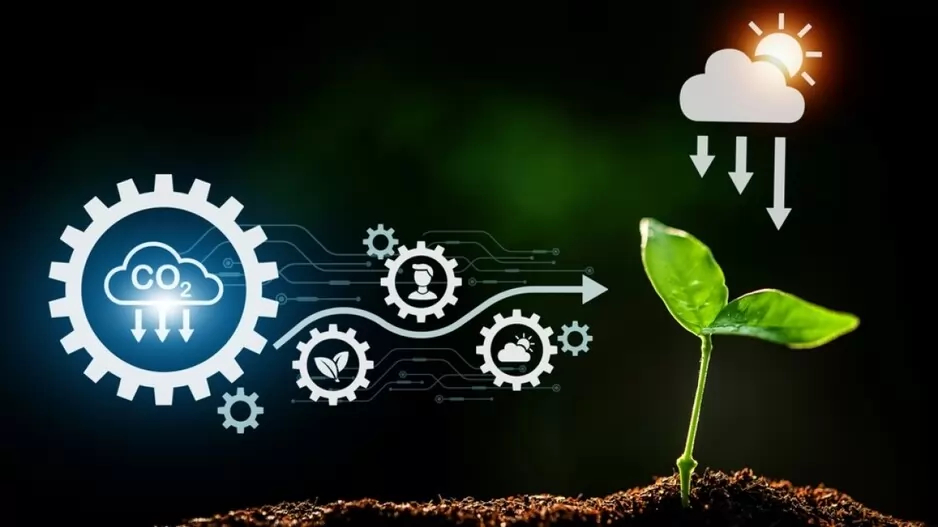Carbon Farming

- 07 May 2024
Why is it in the News?
Carbon farming offers a versatile solution applicable across diverse agro-climatic regions, simultaneously addressing issues such as soil degradation, water scarcity, and climate variability challenges.
What is Carbon Farming?
- Carbon farming refers to a set of agricultural practices designed to sequester carbon dioxide from the atmosphere and store it in the soil.
- The primary goal is to mitigate climate change by enhancing carbon capture and reducing greenhouse gas emissions.
- Through strategic land management, farmers can play a crucial role in offsetting carbon emissions and promoting environmental sustainability.
Principles of Carbon Farming:
- Carbon Sequestration: The core principle involves capturing carbon dioxide through photosynthesis and storing it in the soil.
- This is achieved by promoting the growth of plants and trees that absorb carbon from the atmosphere.
- Reduced Emissions: Carbon farming emphasizes practices that minimize greenhouse gas emissions.
- This includes optimizing fertilizer use, adopting no-till farming, and reducing reliance on synthetic inputs.
- Biodiversity Conservation: Integrating diverse crops and promoting agroforestry practices contribute to biodiversity conservation.
- This enhances ecosystem resilience and supports sustainable agricultural systems.
- Soil Health: Improving soil health is fundamental to carbon farming.
- Practices like cover cropping and rotational grazing not only sequester carbon but also enhance soil structure, water retention, and nutrient cycling.
Benefits of Carbon Farming:
- Climate Change Mitigation: The primary benefit is the significant contribution to mitigating climate change.
- Carbon farming helps offset carbon emissions, acting as a natural solution to reduce the concentration of greenhouse gases in the atmosphere.
- Improved Soil Fertility: The focus on soil health leads to increased fertility and productivity.
- Healthy soils contribute to better crop yields, reduced erosion, and enhanced resilience to climate-related challenges.
- Biodiversity Enhancement: Carbon farming practices support biodiversity by creating habitats for diverse plant and animal species.
- This contributes to ecological balance and resilience in the face of environmental changes.
- Economic Opportunities: Farmers engaged in carbon farming may access new revenue streams through carbon offset programs.
- These initiatives incentivize sustainable practices and provide financial benefits to farmers.
Challenges in Carbon Farming:
- Transition Period: Implementing carbon farming practices often requires a transition period, during which farmers may face initial costs and adjustments to new techniques. Financial support and education are crucial during this phase.
- Market Access: Connecting farmers to carbon offset markets can be challenging. Developing transparent and accessible markets for carbon credits is essential for the success of carbon farming initiatives.
- Education and Awareness: Many farmers may not be familiar with carbon farming practices.
- Education and awareness programs are necessary to disseminate information, build capacity, and encourage widespread adoption.
Conclusion
Carbon farming is a dynamic and evolving approach to agriculture that holds immense promise in the fight against climate change. By understanding its principles, benefits, and challenges, farmers and stakeholders can actively contribute to a more sustainable and resilient future. The key terms associated with carbon farming provide a foundation for navigating this innovative landscape and embracing practices that benefit both the environment and agriculture.
